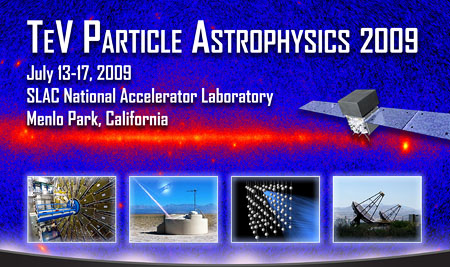The 2009 edition of the TeV Particle Astrophysics conference is about to start (welcome talk on Monday morning, at 8.30am, in the Panofsky auditorium at SLAC). About 200 scientists have already registered for this event, that aims at bringing together theorists and experimentalists, to discuss the present and the future of Particle Astrophysics at the TeV scale (and above). Here is the description of the conference, from the TeVPA’09 website.
Particle astrophysics is now a busy intersection between particle physics, astrophysics and cosmology. In 2009, the Large Hadron Collider will begin taking data and start its exploration of the TeV scale and physics beyond the Standard Model. The Fermi Gamma-ray Space Telescope (FGST) launched in June 2008, and it will have passed its one year anniversary by the time of the conference. Many results have already been reported, and there will be considerably more by the time of the conference. We expect more interesting results from Pamela and ATIC. In addition, ground-based gamma ray telescopes including HESS, MAGIC, VERITAS, MILAGRO and ARGO have been observing gamma-rays at the TeV scale and higher with unprecedented accuracy for years. We also expect new exciting results from Auger. Neutrino experiments such as Antares and IceCube are starting to run at similar and higher energies. Underground experiments that focus on dark matter direct detection, neutrino mass measurement, and gravitational wave detection, are all making rapid progress. This conference aims to understand what we can learn from the present and upcoming observational results from both the LHC and a broad range of astrophysical searches. It will provide an occasion for theorists and experimentalists to discuss the latest and upcoming results in these fields, to consider new strategies, technologies and collaborative efforts to address some of the most pressing questions in physics today, including the nature of dark matter and the origin of cosmic rays.
